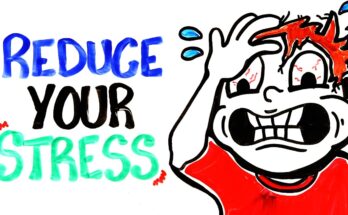Sleepwalking Symptoms: Sleepwalking, a complex sleep disorder, involves walking or performing other activities while asleep.
Recognizing its symptoms and understanding its causes is crucial for effective management and prevention.
What is Sleepwalking?
Sleepwalking, also known as somnambulism, is a behavior disorder that originates during deep sleep and results in walking or performing other complex behaviors while still mostly asleep. It is most common in children but can persist into adulthood and even start in adults. Typically, the sleepwalker has little to no memory of the event.
Basic Facts About Sleepwalking
- Origination: Sleepwalking occurs during the deep stages of sleep, specifically stages 3 and 4 of non-rapid eye movement (NREM) sleep, usually early in the night.
- Activities: Activities during sleepwalking episodes can range from walking around the house, cleaning, or more complex tasks like cooking or driving.
- Consciousness: The sleepwalker is not fully conscious and will have little to no memory of the episode.
- Causes: It can be triggered by sleep deprivation, sedative agents (including alcohol), febrile illnesses, and medical conditions like sleep apnea.
- Safety Concerns: Sleepwalking can pose safety risks, not only to the sleepwalker due to potential falls or injuries but also to others if aggressive behavior occurs.
Statistics on Prevalence Among Different Age Groups
- Children: Sleepwalking is most prevalent among children, with about 15% of children between the ages of 5 and 12 years experiencing at least one episode of sleepwalking.
- Adolescents: The prevalence decreases in adolescence but is still significant. Approximately 5% of teenagers are reported to sleepwalk.
- Adults: In adults, prevalence rates drop to about 1.5% to 2.5%. However, adults who sleepwalk may continue to do so over many years if not addressed.
- Age Onset: While it typically begins in childhood, adult-onset sleepwalking is not uncommon and is often triggered by external factors such as stress, sleep disruption, or alcohol consumption.
However, understanding sleepwalking is crucial not only for the safety of those who experience it but also for aiding them in managing the condition effectively.
Sleepwalking Symptoms
Recognizing the symptoms of sleepwalking is essential for ensuring safety and seeking appropriate treatment. Here are some of the most common symptoms associated with sleepwalking:
- Walking during sleep: The most apparent sign of sleepwalking is walking around while still asleep. Sleepwalkers often have their eyes open with a glassy, staring appearance as they move around.
- Non-responsive behavior: When someone is sleepwalking, they usually do not respond coherently to others’ attempts to communicate with them and often appear dazed or confused if woken up.
- Performing routine tasks: A sleepwalker might perform routine tasks, such as getting dressed, moving furniture, or even driving, without any awareness of their actions.
- Limited memory recall: After waking up, a sleepwalker will generally have little to no memory of their actions.
- Disorientation upon waking: Upon waking, either during a sleepwalking episode or the following morning, individuals often feel confused, disoriented, and unaware of their activities.
Distinguishing Sleepwalking from Other Sleep Disturbances
Sleepwalking can sometimes be confused with other sleep disorders, but there are distinctive characteristics that help differentiate it:
- Timing of episodes: Sleepwalking typically occurs during the deep stages of sleep, usually within the first third of the night, unlike nightmares, which occur during REM sleep.
- Physical activity: The level of activity in sleepwalking is more complex and purposeful compared to other sleep disturbances. While someone might simply sit up in bed during a night terror, a sleepwalker performs more coordinated actions.
- Memory of the event: Unlike those who experience sleep terrors or nightmares, sleepwalkers usually do not remember the episode. People with nightmares often recall vivid details upon waking.
- Response to interaction: During a sleepwalking episode, the individual is hard to awaken and will not usually respond to attempts at communication, differing from other sleep disturbances where the person might be more easily awakened or comforted.
However, understanding these symptoms and characteristics can aid in accurately identifying sleepwalking and thus ensuring that appropriate measures are taken for management and treatment.
Common Causes of Sleepwalking
Understanding the causes of sleepwalking can help in managing or preventing occurrences. Here’s a detailed look at the common causes of sleepwalking.
Genetic Factors and Family History
- Hereditary Influence: Research suggests that sleepwalking can run in families. If one or both parents have a history of sleepwalking, there’s a higher likelihood their children may experience it too.
- Genetic Predisposition: Specific genetic markers linked to sleep disorders could predispose individuals to sleepwalking. Studies show that individuals with these markers often exhibit sleepwalking behaviors.
Environmental Triggers and Stress-Related Causes
- Stress and Anxiety: High stress levels and anxiety are significant triggers for sleepwalking. They disrupt normal sleep patterns, making episodes more likely.
- Sleep Deprivation: Lack of adequate sleep can trigger sleepwalking. Ensuring a regular sleep schedule may help reduce occurrences.
- Chaotic Sleep Environments: Noisy or uncomfortable sleep environments disrupt sleep and can lead to sleepwalking.
The Impact of Other Sleep Disorders or Medications
- Associated Sleep Disorders: Conditions like sleep apnea, restless legs syndrome, or insomnia can exacerbate sleepwalking. These disorders interrupt the natural sleep cycle and increase the likelihood of sleepwalking.
- Medication Side Effects: Certain medications, especially those that affect the brain and sleep architecture, can trigger sleepwalking. These include sedatives, neuroleptics, stimulants, and some types of antidepressants.
However, regular sleep routines, stress management, and reviewing medications with a healthcare provider are practical steps to take.
The Science Behind Sleepwalking
Sleepwalking, medically known as somnambulism, involves walking or performing other complex behaviors while in a state of sleep. It’s a phenomenon that has intrigued scientists and psychologists alike, prompting in-depth studies into its underlying causes and mechanisms.
What Happens in the Brain During Sleepwalking?
During sleepwalking episodes, the brain is caught in a unique state of consciousness where it is neither fully awake nor completely asleep. This hybrid state results in activities that are normally performed during full consciousness, such as walking, without the full awareness of the individual.
- Partial Activation: The primary areas of the brain involved in motor control and coordination become active, while the regions responsible for higher executive functions (like judgment and decision-making) remain dormant. This disparity in brain activity allows a person to perform physical activities but with a lack of conscious awareness and memory of the events.
- Neurochemical Factors: Neurotransmitters, which are chemicals that transmit signals in the brain, play a crucial role. An imbalance in these chemicals, particularly those involved in sleep regulation such as serotonin and dopamine, might trigger sleepwalking. This imbalance disrupts the normal sleep cycle, making episodes of sleepwalking more likely.
- Thalamocortical Disconnect: Research suggests a disconnect between the thalamus, which regulates sleep, and the cortex, which handles higher thought processes. This disconnect can result in a person acting out physically due to lower brain activity without the involvement of the fully conscious mind.
The Role of Sleep Stages in Triggering Sleepwalking Episodes
Sleep stages are critical in understanding why sleepwalking occurs:
- Non-REM Sleep: Sleepwalking typically occurs during the deeper stages of non-REM (rapid eye movement) sleep, usually stages 3 and 4, known as slow-wave or delta sleep. During these stages, the brain slows down significantly, which may facilitate the disconnect between different brain areas.
- Transition Phases: Episodes are most likely to happen during transitions from deep non-REM sleep to lighter sleep stages or wakefulness. These transition periods can create a state of partial arousal, which is ideal for triggering sleepwalking.
- Sleep Cycles: Each night, a person goes through multiple cycles of non-REM and REM sleep. Sleepwalking tends to occur in the first one or two cycles when non-REM sleep dominates. This is typically within an hour or two of falling asleep.
However, awareness of the brain’s functions during sleep and the significance of sleep stages provides insights into preventive measures and potential therapeutic interventions for those affected by sleepwalking.
Complications and Risks Associated with Sleepwalking
While it may seem harmless or even comical in movies, sleepwalking can have serious implications for the health and safety of those affected. Understanding the potential dangers and long-term effects is crucial for managing and mitigating risks associated with this condition.
Potential Dangers During a Sleepwalking Episode
- Injuries: Sleepwalkers are at a high risk of injuring themselves during episodes. They may trip, fall, bump into objects, or even walk into dangerous situations without any awareness of their environment.
- Accidents: Operating machinery or driving a vehicle while sleepwalking can lead to serious accidents. Sleepwalkers lack the consciousness to safely handle these activities, making them extremely dangerous.
- Violence: Though rare, there are instances where sleepwalkers may become violent during an episode. This can be directed towards themselves or others, often as a reaction to a perceived threat in their sleep state.
- Inappropriate Behavior: Sleepwalkers might carry out inappropriate or odd behaviors such as urinating in closets, leaving the house, or even engaging in sexual activities without awareness or consent.
- Sleep Disruption: Frequent episodes can significantly disrupt the sleepwalker’s sleep patterns, as well as those of their family members, leading to sleep deprivation and its associated risks.
Long-term Effects on Mental and Physical Health
- Chronic Fatigue: Regular disruption of sleep can lead to chronic fatigue, impacting the sleepwalker’s overall health and ability to function during the day.
- Increased Anxiety and Depression: The stress of sleepwalking and its potential consequences can contribute to psychological distress. Over time, this may manifest as increased anxiety or depression.
- Impaired Social Functioning: The fear of sleepwalking can lead to anxiety about sleeping in unfamiliar environments or close proximity to others, potentially straining social and family relationships.
- Physical Health Issues: Chronic sleep deprivation associated with sleepwalking can contribute to a range of health issues, including obesity, diabetes, cardiovascular disease, and weakened immune function.
- Memory and Cognitive Impairments: Persistent disruption of deep sleep can affect cognitive functions, leading to memory problems, difficulty concentrating, and impaired decision-making abilities.
However, addressing sleepwalking typically involves a combination of safety measures, medical interventions, and sometimes therapy to reduce the frequency and severity of episodes.
Managing and Treating Sleepwalking
Managing and treating sleepwalking involves understanding its triggers, implementing preventive measures, recognizing when professional help is needed, and exploring various treatment options.
Preventive Measures to Minimize the Occurrence of Sleepwalking
- Establish a Regular Sleep Schedule: Consistency in bedtime and wake-up times helps stabilize the body’s internal clock, reducing the likelihood of sleep disruptions like sleepwalking.
- Create a Safe Sleep Environment: Remove potential hazards in the sleep area to prevent injury. This includes securing windows and doors, clearing the floor of obstacles, and using night lights.
- Limit Stimulants: Avoid caffeine or heavy meals close to bedtime, as these can disrupt sleep and potentially trigger sleepwalking episodes.
- Promote Relaxation Techniques: Encourage activities that promote relaxation before bed, such as reading, taking a warm bath, or practicing meditation or deep breathing exercises.
- Reduce Stress: Since stress can be a significant trigger for sleepwalking, techniques for stress management, such as yoga, therapy, and regular physical activity, can be beneficial.
- Monitor Screen Time: Minimize exposure to screens and electronic devices before bedtime, as the blue light emitted can interfere with the natural sleep cycle.
When to Seek Medical Help for Sleepwalking
It’s crucial to consult a healthcare provider if:
- Frequency and Severity Increase: If sleepwalking episodes become more frequent or severe, it might indicate underlying health issues.
- Safety is Compromised: If the sleepwalking results in potentially dangerous behaviors, such as leaving the house or driving.
- Daytime Fatigue: If sleepwalking significantly impacts daytime alertness and functionality, affecting school, work, or daily activities.
- New Occurrences in Adults: Sleepwalking starting in adulthood is unusual and should be assessed by a medical professional to rule out other sleep disorders or medical conditions.
- Associated Symptoms: If sleepwalking is accompanied by other symptoms, such as snoring or gasping for air, which could suggest sleep apnea.
Treatment Options Available for Sleepwalking
- Medication: In some cases, doctors may prescribe medications such as benzodiazepines or antidepressants to reduce sleepwalking episodes.
- Scheduled Awakenings: Waking the sleepwalker approximately 15-20 minutes before the usual time of an episode can sometimes prevent it from occurring.
- Mental Imagery Rehearsal: This cognitive-behavioral technique involves the person imagining themselves waking up when they begin sleepwalking, which can help prevent future episodes.
- Counseling or Therapy: If stress or anxiety is a trigger, psychological counseling or therapy can be effective in managing the underlying issues contributing to sleepwalking.
- Lifestyle and Environmental Changes: Incorporating the preventive measures listed above into daily routines can serve as a long-term treatment strategy to minimize sleepwalking.
By understanding these aspects of sleepwalking management and treatment, individuals and their families can take proactive steps towards mitigating the impact of this disorder, ensuring safer and more restful nights.
FAQs about Sleepwalking Symptoms
What is sleepwalking?
Sleepwalking, also known as somnambulism, involves walking or performing other complex behaviors while in a state of sleep. Typically, it occurs during deep sleep phases in the first few hours after falling asleep.
What are the common symptoms of sleepwalking?
Common symptoms include walking during sleep, having a blank, staring face, being unresponsive when spoken to, and difficulty in waking up the sleeper during an episode. Some may also perform routine actions, such as dressing or making food.
Who is most likely to experience sleepwalking?
Sleepwalking is more common in children and adolescents but can affect adults as well. Factors that may contribute include sleep deprivation, sedative agents (including alcohol), fevers, and certain medications.
Is sleepwalking a sign of underlying health issues?
In many cases, sleepwalking is not linked to significant underlying health problems. However, persistent or frequent episodes should be evaluated by a healthcare professional as they could be associated with sleep disorders or neurological conditions.
Can sleepwalking be prevented?
Preventive measures can reduce the incidence of sleepwalking. These include maintaining a regular sleep schedule, ensuring a safe sleeping environment, avoiding sleep deprivation, and managing stress. In some cases, medical intervention may be required.
What should you do if you encounter someone sleepwalking?
It’s important not to wake a sleepwalker as this can cause confusion and aggression. Instead, gently guide them back to bed. Ensure their environment is free of anything that could harm them during an episode.
Conclusion
In summary, recognizing the symptoms and understanding the causes of sleepwalking are critical steps towards effective management of this condition. It is essential to pay attention to frequent episodes of sleepwalking, which can range from simple nightly disturbances to more severe activities. Knowing the triggers—such as stress, sleep deprivation, and certain medications—can help in addressing the root causes and preventing future episodes.
We strongly encourage anyone experiencing or observing sleepwalking behaviors to consult with healthcare providers. A professional evaluation is crucial, as it can rule out underlying conditions and lead to a tailored treatment plan. Remember, addressing sleepwalking proactively enhances overall well-being and ensures a safer, more restful sleep environment. Do not hesitate to seek help and gain control over sleepwalking for a healthier, more balanced life.
References
For a more comprehensive understanding and validation of the information provided about sleepwalking symptoms, the following reputable sources are recommended for further reading:
- National Sleep Foundation – Provides detailed insights into sleepwalking, including symptoms, causes, and treatment options. Read about Sleepwalking on National Sleep Foundation.
- Mayo Clinic – A trusted resource for health information. Their section on sleepwalking offers a clinical overview and advice on when to seek medical attention. Visit Mayo Clinic’s Sleepwalking Guide.
- Healthline – Offers easy-to-understand information on a wide range of health conditions, including sleepwalking. Their coverage includes symptoms, risk factors, and prevention tips. Explore Healthline’s Sleepwalking Symptoms and Causes.
- WebMD – Features articles reviewed by medical professionals to ensure accuracy. Read their comprehensive article on managing and understanding sleepwalking. WebMD’s Guide to Understanding Sleepwalking.
These resources will help enhance your understanding of sleepwalking, ensuring that you have access to scientifically accurate and reliable information.



